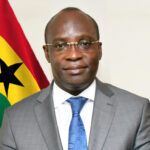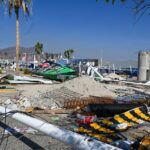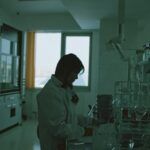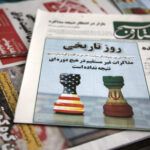Behind the scenes of Three Mile Island
By Victor Gilinsky | March 23, 2009
Shortly after I arrived at the Nuclear Regulatory Commission (NRC)’s headquarters in Washington, D.C., at 9 a.m. on Wednesday, March 28, 1979, I got a call from the commission’s emergency center in Bethesda, Maryland. The number two reactor at the Three Mile Island nuclear plant in Pennsylvania had declared a general emergency. There weren’t supposed to be serious accidents at nuclear power plants and having to deal with one led to some, let us say, out-of-the-ordinary, and even absurd, behavior.
NRC Chairman Joe Hendrie was with his daughter, who was undergoing dental surgery. As the senior commissioner on duty, I took over the first day and arranged for the Bethesda staff to brief the commissioners–Peter Bradford, Richard Kennedy, and myself. The other commissioner, John Ahearne, had gone off on his own to Bethesda. The lawyers said we had to keep a transcript, as the meeting was not public. I thought this would interfere with serious discussion, so I opened the door and pronounced the meeting public.
The experts told us that perhaps about 1 percent of the fuel rods had overheated and suffered “pinhole” damage to the long zirconium tubes that encased the uranium fuel pellets. But, they insisted there was no chance that the fuel melted. Hendrie endorsed this view the next morning in congressional testimony. The experts added that the high radiation readings in the dome of the reactor building probably reflected instrument problems. Aircraft pilots are instructed to believe their instruments, but I hesitated to argue with the staff. They could be right, I thought at the time. There were penalties for getting it wrong either way. I wished I’d spent more time understanding power reactors, but it was too late at that point. The incident response center staff didn’t seem up to dealing with the accident, but this was no time to change horses. I tried to appear calm and to support the emergency team. After our briefing, I called Energy Secretary Jim Schlesinger. He paused and said the political fallout of the accident would be greater than the physical one.
To jump ahead in my story, it was not until Friday that we realized the fuel damage might be substantial. It was five weeks later that we learned that the reactor operators had measured fuel temperatures near the melting point on that early Wednesday morning. We didn’t learn for years–until the reactor vessel was physically opened–that by the time the plant operator called the NRC at about 8 a.m., roughly one-half of the uranium fuel had already melted. In a sense, the accident was over before we had even heard about it–and it had been many, many times worse than we envisioned at the time.
Prior to the accident, I imagined that everything speeds up in a crisis. My experience was the exact opposite, however. My body felt heavy and everything seemed to move in slow motion. For one thing, after the first day everyone suffered from a severe lack of sleep. It was difficult to process the uncertain and often contradictory information. I got lots of useless advice from all sides. No one seemed to have a reliable grip on what was going on, or what to do. But they knew each action was loaded with consequences–for themselves, for the NRC, and for nuclear power.
Outsiders expected me to know technical details I had no idea about, something that was difficult to confess. Congressmen and senators called asking, “Why doesn’t the NRC take over the reactor?” I had to explain that no one at the NRC was licensed to operate it. In fact, only two or three NRC staff members had ever operated a power reactor. The commission was a paper-pushing operation that reviewed license applications. The excuse that the company was supposed to deal with the accident didn’t wash with the Congress or public.
In Washington everything has a political dimension, and officials charged with protecting the public often have other things on their minds. Nowhere is this more so than in the White House.
On Friday, we sent the head of our reactor licensing office, Harold Denton, to Pennsylvania. Denton’s straight answers on TV, delivered with a soothing North Carolina lilt, had a calming effect. The White House liked it. Almost immediately President Jimmy Carter designated Harold his “personal representative” at the accident site, thus bypassing the NRC chairman.
The White House set up a direct phone link between Harold and Jimmy Carter. Friends in the White House told me the two spoke privately every day for as long as 20 minutes, an awfully long time for a president.
Carter had previously described nuclear power as “a last resort,” yet behind this façade he was apparently an enthusiast, privately dismissing the accident’s safety significance and echoing Schlesinger’s concern about the need to protect nuclear energy’s prospects. Carter’s assistants worried he wasn’t getting a balanced view. They didn’t trust Joe Hendrie, who had been installed by Schlesinger. In time I found myself briefing senior White House staff in the Situation Room. They wanted to know about the NRC’s concern (wrong-headed, as it turned out) that a large hydrogen bubble in the reactor could explode perhaps damaging the containment structure and releasing deadly radioactive material. It was not possible for anyone to get close enough to manually release a valve and survive the radiation. At the end of the meeting Frank Press, the president’s science aide, took me aside and suggested, sotto voce, that we send in terminal cancer patients. I looked over at him quickly; he wasn’t kidding.
The White House staff was nervous and even paranoid about the private Jimmy-Harold conversations. A presidential assistant pressed me to find out what they talked about. When I reached Harold he said they talked mostly about technical details, including things like how many lead bricks had been stacked that day to shield against radiation. Harold, who retained a kind of innocence, added, “You know, Vic, it’s funny. Every day I tell him everything I’m doing, and he never tells me anything about what he’s doing.” I duly reported this.
On Sunday April 1 the president went up to the site–and got a front-page picture in almost every paper of him touring the control room with a plant supervisor (who was later found to have cheated on his re-qualification test). The White House didn’t bother to tell Chairman Hendrie about the visit, which included a briefing by Harold. When he heard about it, Hendrie drove up himself, only to be barred from the briefing. Carter later fired him as chairman, and made Ahearne “acting chairman” (although there is no such designation in the law). Ironically, Hendrie got replaced not because the NRC had dropped the ball on safety, but because in a candid moment he blurted out in public that a 20-mile evacuation might be necessary, which annoyed the White House.
When Harold returned to his Bethesda office his direct presidential line followed him. That someone below them could pick up a phone and complain directly to the president rankled the NRC’s top bureaucrats. When Harold was away they had the phone unplugged and returned to the White House. Harold, being an unassuming guy, hardly noticed.
After Jimmy Carter lost the 1980 election to Ronald Reagan, the commissioners got an invitation to meet with the president to say goodbye. Ahearne wouldn’t go because the invitation had been misaddressed to “Chairman Hendrie,” Hendrie wouldn’t go because Carter had fired him, which left Peter Bradford and me. We looked forward to reminiscing with the president about the accident. On a bitterly cold January day, bundled up in parkas, we walked the two blocks to the White House. When we got close, it was obvious we had got it wrong–Carter had apparently invited all his political appointees. Most were chauffeured, and as they thought they would step directly into the West Wing, had come without coats. The entire top of the government was now shivering on the lawn, as young White House assistants herded them into groups to enter the building and eventually the Oval Office, each to have a picture taken with a smiling president and to receive a pair of cufflinks or a pin. Peter and I got grouped with the Energy Department because the White House assistants thought the NRC was part of it.
Reagan installed Joe Paladino, a professorial type, as NRC chairman. He tried to apply some of the recommendations of the Kemeny Commission, which had investigated the accident, including exercising the emergency plan. I attended one exercise involving a supposed accident in Illinois. Usually NRC staff played the parts of state and federal officials, but on rare occasions the officials themselves participated. At one point, the chairman was told the governor was on the line. Paladino rattled off the “reactor’s” temperature and pressure and hung up, at which point a staffer told him that he had just hung up on the real Illinois governor. Paladino grimaced. The next call was from “Mr. Mouse at the White House” (an obvious play on the name of Reagan’s counselor, Ed Meese). As the governor had been the real governor, Paladino wasn’t about to take another chance. He could not have been more ingratiating to “Mr. Mouse.” Everyone froze in embarrassment. It was too late for the lowly staffer at the other end to confess. Neither he nor the chairman knew how to end the conversation. I had to walk out.
Fortunately for everyone, the NRC hasn’t had to cope with the real thing again.
Together, we make the world safer.
The Bulletin elevates expert voices above the noise. But as an independent nonprofit organization, our operations depend on the support of readers like you. Help us continue to deliver quality journalism that holds leaders accountable. Your support of our work at any level is important. In return, we promise our coverage will be understandable, influential, vigilant, solution-oriented, and fair-minded. Together we can make a difference.
Topics: Nuclear Energy, Opinion















